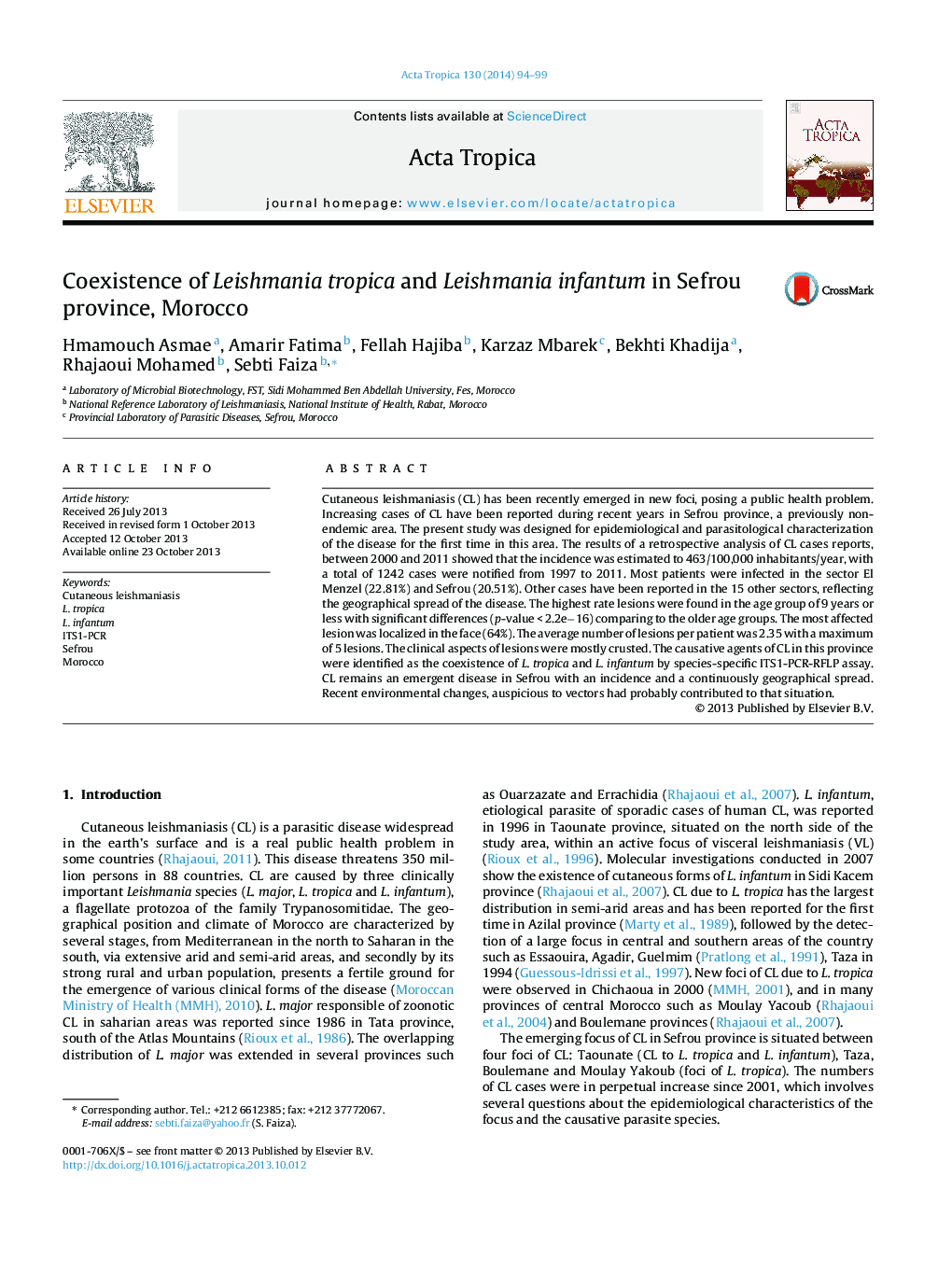| Article ID | Journal | Published Year | Pages | File Type |
|---|---|---|---|---|
| 6127583 | Acta Tropica | 2014 | 6 Pages |
Abstract
Cutaneous leishmaniasis (CL) has been recently emerged in new foci, posing a public health problem. Increasing cases of CL have been reported during recent years in Sefrou province, a previously non-endemic area. The present study was designed for epidemiological and parasitological characterization of the disease for the first time in this area. The results of a retrospective analysis of CL cases reports, between 2000 and 2011 showed that the incidence was estimated to 463/100,000 inhabitants/year, with a total of 1242 cases were notified from 1997 to 2011. Most patients were infected in the sector El Menzel (22.81%) and Sefrou (20.51%). Other cases have been reported in the 15 other sectors, reflecting the geographical spread of the disease. The highest rate lesions were found in the age group of 9 years or less with significant differences (p-value < 2.2eâ16) comparing to the older age groups. The most affected lesion was localized in the face (64%). The average number of lesions per patient was 2.35 with a maximum of 5 lesions. The clinical aspects of lesions were mostly crusted. The causative agents of CL in this province were identified as the coexistence of L. tropica and L. infantum by species-specific ITS1-PCR-RFLP assay. CL remains an emergent disease in Sefrou with an incidence and a continuously geographical spread. Recent environmental changes, auspicious to vectors had probably contributed to that situation.
Related Topics
Life Sciences
Immunology and Microbiology
Parasitology
Authors
Hmamouch Asmae, Amarir Fatima, Fellah Hajiba, Karzaz Mbarek, Bekhti Khadija, Rhajaoui Mohamed, Sebti Faiza,
